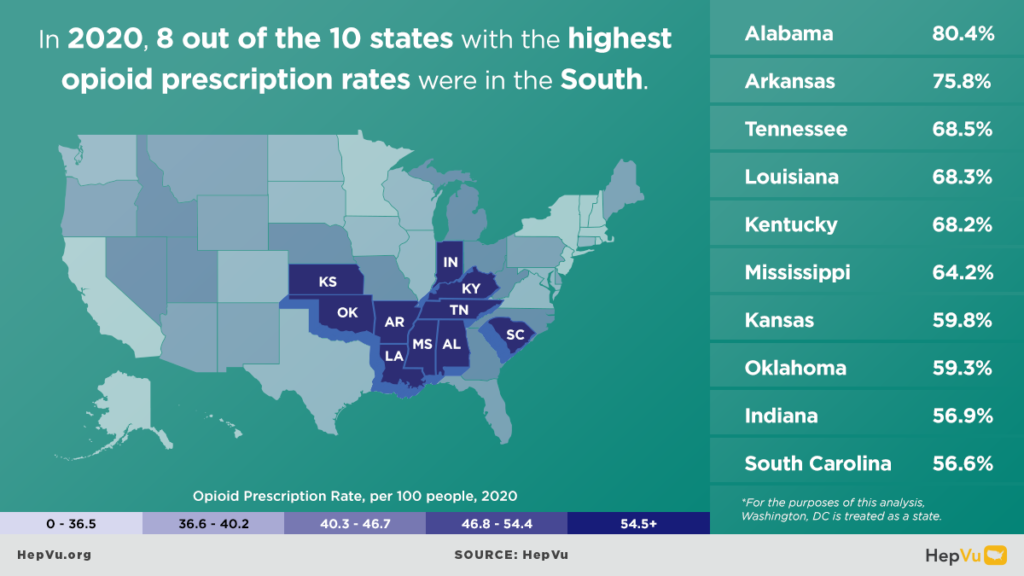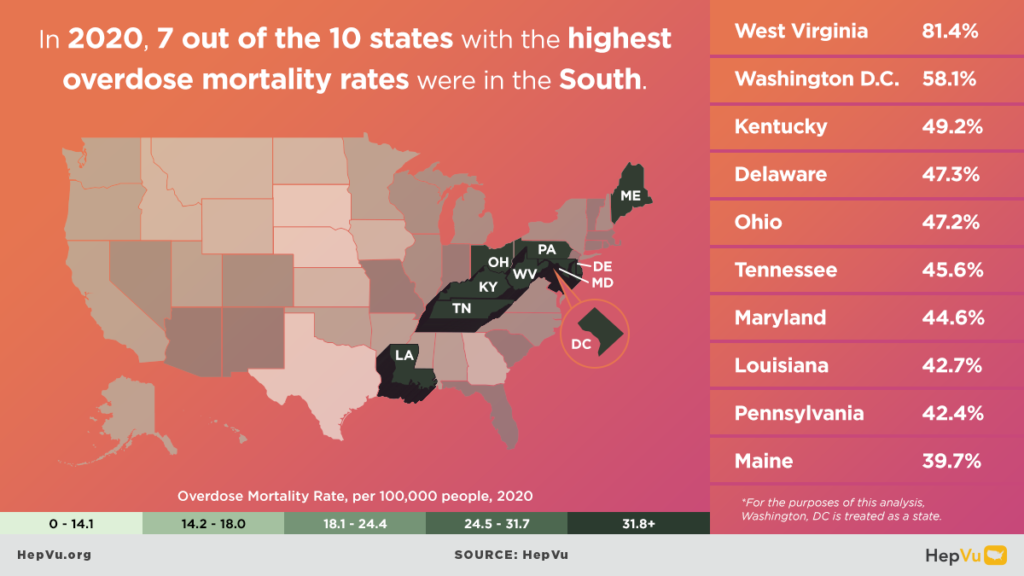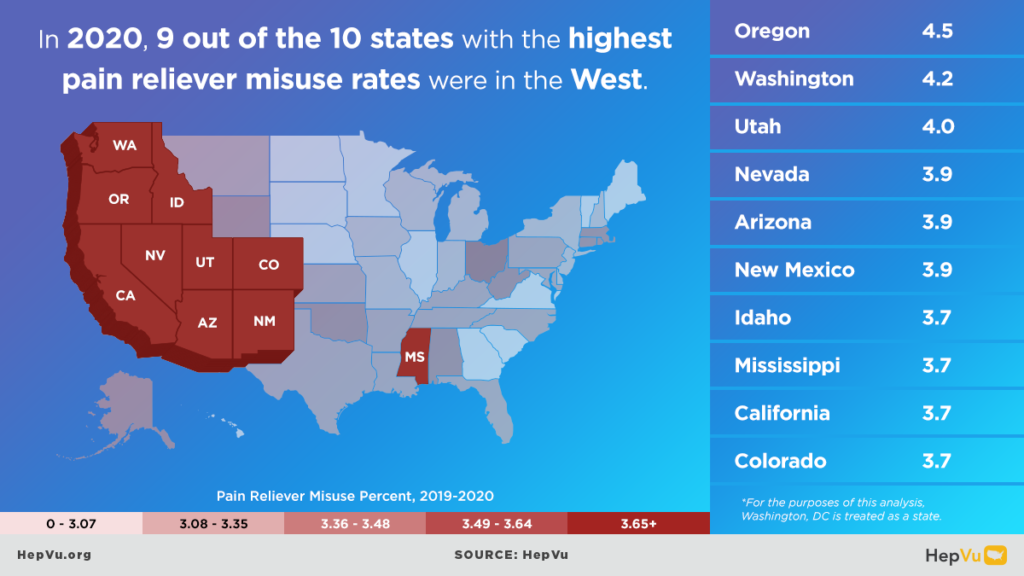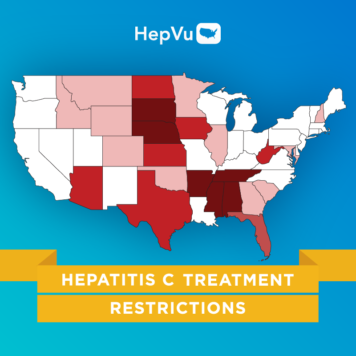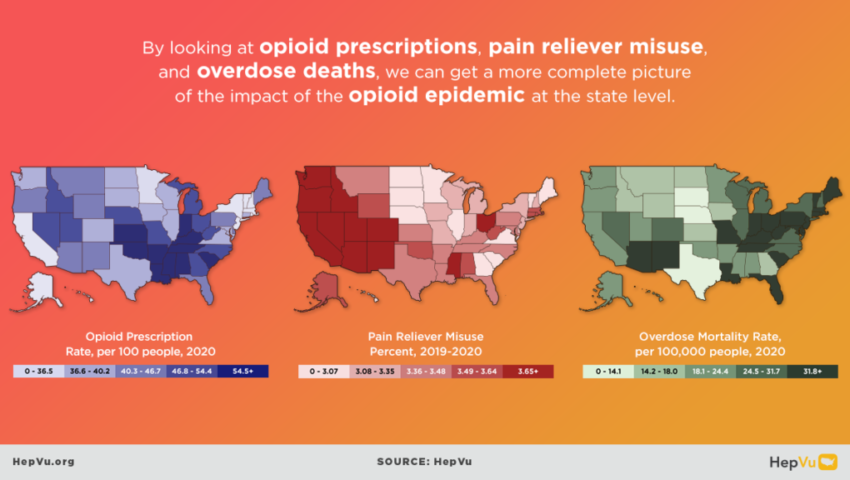
Today, HepVu added updated state-level opioid prescription, pain reliever misuse, and overdose mortality data and maps to visualize the relationship between the opioid and viral hepatitis epidemics, as well as illustrate how differences among geographic regions can affect health outcomes. These maps visualize 2020 opioid prescription rates, 2018-2019 pain reliever misuse percent, and 2020 overdose mortality rates across the U.S.
According to the Centers for Disease Control (CDC), the number of deaths due to opioid abuse has increased sharply since 2015. In addition, the Office of National Drug Control Policy (ONDCP) found in its 2022 National Drug Control Strategy that 105,752 people were predicted to have died from drug overdose between October 2020-2021. This sobering statistic is a 71% increase compared to the same period in 2016. Of these deaths, 66% involved synthetic opioids.
The problem is especially acute in the South. In 2020, 8 out of the 10 states with the highest opioid prescription rates were in the South, as well as 7 of the 10 states with the highest overdose mortality rates.

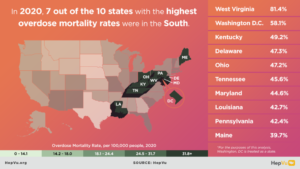
State-Level Opioid Indicators on HepVu
The state-level opioid data on HepVu provide an overview of the relationship between opioid prescribing practices, pain reliever misuse, and overdose mortality rates in the U.S. Despite the ongoing opioid crisis, twelve states saw an increase in opioid prescribing rates from 2019 to 2020.
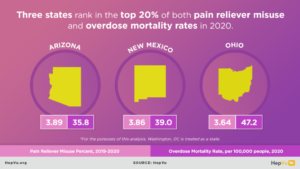
Opioid data profiles and maps on HepVu can be used to:
- Monitor progress, trends, and disparities in opioid prescriptions, pain reliever misuse, and overdose mortality at the state-level and compare side-by-side with maps of social determinants of health visualizing poverty, high school education, and median household income;
- Compare opioid data among states in your region, as well as viral hepatitis data such as prevalence and mortality;
- Support research to identify areas that experience an increase in injection drug use and subsequent increases in Hepatitis C transmission;
- Inform advocacy to improve the health of people who use drugs; and
- Inform public health planning.
For more information on the data source and limitations of HepVu’s opioid data, see our Data Methods and FAQs.
To learn more about state-level opioid prescription, pain reliever misuse, and overdose mortality data, explore HepVu’s resources:
- View interactive opioid prescription, pain reliever misuse, and overdose mortality maps at the state-level and compare to social determinants of health maps.
- Download opioid prescription, pain reliever misuse, and overdose mortality data at the state-level on HepVu for your own research and analysis.
- Read expert-led blogs to deepen your understanding of the relationship between the opioid and viral hepatitis epidemics.



